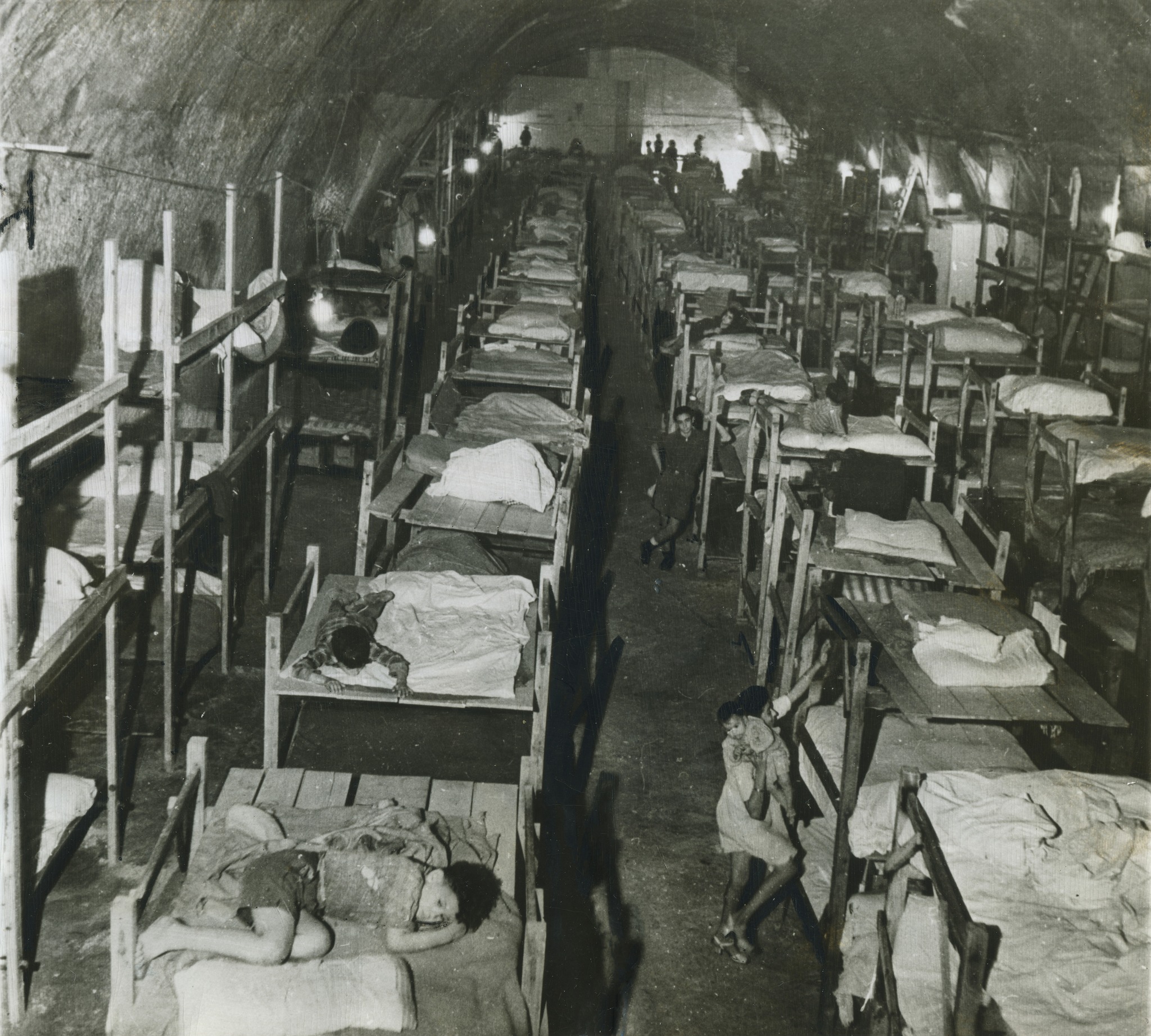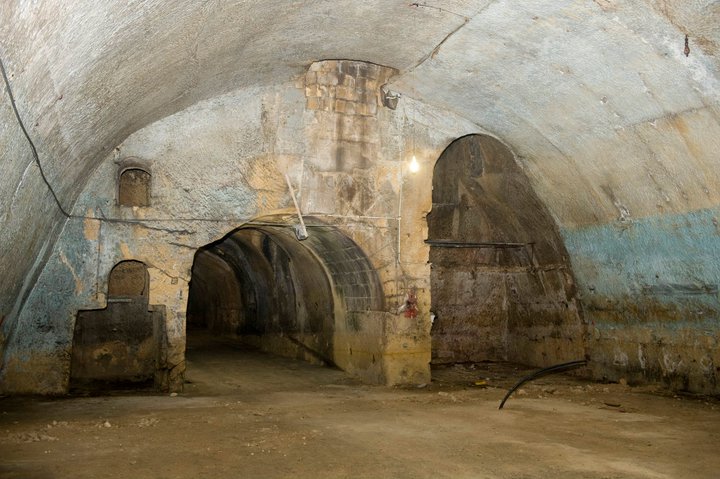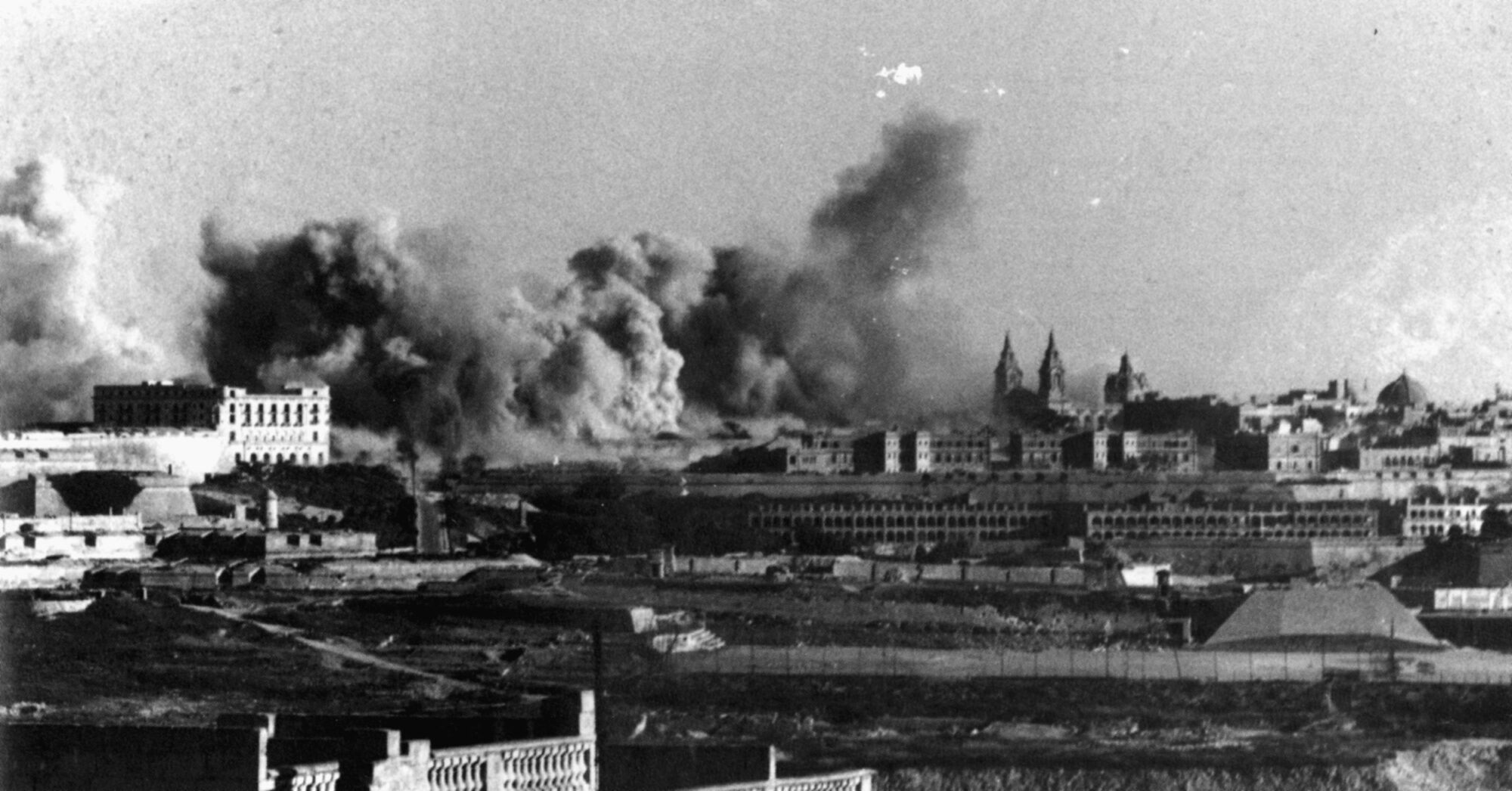A syndicated press photo of Valletta railway station Jan 1942 when the railway tunnels offered precious shelter from the bombing raids inflicted upon the island. The photographer takes an elevated position at the city end of the tunnel, where the original steps once descended down to the platforms. In the far distance, on the right-hand side, at the arched opening that led to the ramps that replaced the original steps as access into the station.
During WWII solid blast walls were erected across the open end of the station tunnel, giving a secure but dark and oppressive atmosphere to the air raid shelter set up there. Newspaper reports suggest thousands took to living in the former railway tunnels.

THOUSANDS LIVING IN RAILWAY TUNNELS
Liverpool Daily Post 17 June 1940.
Malta, Sunday.—Malta had its first air-raid this morning 8.15, the alarm lasting until 9.25. Heavy firing was heard. This is about the twenty-fifth raid since Tuesday morning.
There were two air raids yesterday. The first, at 10.45 a.m., was on Valletta, when a small number of high explosive bombs were dropped- One civilian was killed by a fall of rock and three were seriously wounded. Five other civilians were slightly injured. No material damage was done.
After a second alarm, which proved to be a false one, a solitary bomber was seen approaching at 6.20 p.m. Our fighter aircraft gave battle and the bomber fled, dropping nine bombs in the sea. It was peppered with machine-gun bullets, and it is thought unlikely that it reached its base.
General Dobbie, the Acting Governor, yesterday broadcast to the people of Malta expressing his admiration of their splendid behaviour. The Governor has inaugurated a fund to relieve distress in Malta, £1,745 being subscribed in the first hour. The exodus of townspeople into the villages continues and thousands are living in old railway tunnels. Refugee settlement centres are being established in each village to deal with this problem.



No responses yet